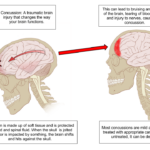PATELLOFEMORAL PAIN SYNDROME (PFPS)
What is Patellofemoral Pain Syndrome?
The Patellofemoral Pain Syndrome (PFPS) is often also referred to as“ runner’s knee” due to it’s high prevalence among runners. The PFPS is characterized by knee pain that originates from the back of the patella(kneecap) where comes in contact with the femur (thigh bone).
The pain can start gradually or as the result of an event such as a sudden increase in training intensity. Normally the patella glides up and downa long a track at the end of the femur however this can become inflamed causing the pain.
What are risk factors for Patellofemoral Pain Syndrome? Increased pressure on the patella is the major reason for the PFPS syndrome and can be caused by overuse, of the patella, muscle imbalances leading to weakness or tightness in areas such as the IT band, calves, quadriceps or hamstrings.
A sudden change in training intensity, worn or inadequate footwear or excess weight can also cause the onset of the symptoms.
WHAT ARE THE SYMPTOMS?
· Discomfort while sitting with bent knees, descending stairs, squatting or jumping
· Tenderness along the inside border of the kneecap
· General knee pain often described as a dull ache underneath the kneecap
· Occasional swelling after exercise
· Occasional knee buckling
· Click or cracking sound when bending the knee
WHAT ARE THE TREATMENT OPTIONS?
· Short-term over-the-counter anti-inflammatories and ice for pain management during the acute phase
· Exercise protocols that target individual muscular imbalances
· Massage therapy or self-myofascial release techniques to improve tightness of the affected areas
· Proper footwear or foot orthotics
It is important to include an exercise protocol that focuses on regaining strength and flexibility. These should be performed on a regular basis for a minimum of 6 weeks.
Soft tissue work using a foam roller can be helpful to restore muscular imbalances around the knee area. Exercises focusing on strengthening of the quadriceps and the vastus medialis have shown to be affective for preventing and improving the PFPS as they influence proper knee tracking. Discuss these options with your health care professional to determine which would be the best treatment approach for you.







